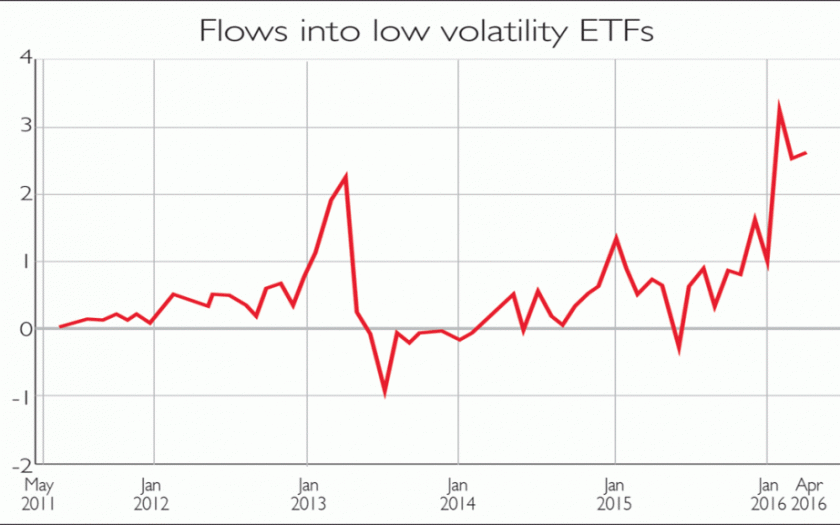
Low-volatility funds – which invest in stocks that are expected to fall less than the wider market during downturns – have been a major success for the asset-management industry recently. Almost $10bn was invested into low-volatility exchange-traded funds (ETFs) in the first four months of 2016, according to fund research firm Morningstar, taking total assets into these funds to $35bn. But the growing popularity of low-volatility investing is leading to concerns that, in a future market downturn, such funds may not behave as investors expect.
The selling point for low-volatility funds is fairly simple: they might lag the market during good times, but should go down by less during a downturn. In return for a safer, smoother ride, investors accept that overall returns might be less than could be achieved with a higher-risk approach.
In reality, the story becomes even more appealing because – contrary to what finance theory says – there is evidence that low-volatility stocks have outperformed more volatile ones on average over the long term. This may be because they seem duller, and are hence undervalued by investors looking for big gains. So a low-volatility equity strategy would have earned higher returns with less risk – the holy grail for investors.
That said, low-volatility stocks are still stocks: they may fall by less than the wider market, but they will still drop in a crisis. For example, the top 25 holdings in the iShares Edge MSCI Minimum Volatility ETF dropped by an average of 17% in the 2008 global financial crisis, according to John Coumarianos in The Wall Street Journal – better than the 37% drop in the S&P 500, but still unpleasant. They don’t give the same protection as holding a balanced portfolio of stocks, bonds and cash.
What’s more, the growing popularity of low-volatility investing may be distorting the value of these stocks. The direct impact of low-volatility funds is likely to be very modest: BlackRock’s US ETF accounted for just 0.03% of the market capitalisation of the 198 stocks in its portfolio, according to Stephen Foley in the Financial Times. But other investors are also favouring these stocks outside of dedicated low-volatility funds, and hence they are much more expensive relative to the wider market than normal, according to asset manager Research Affiliates.
All else being equal, higher valuations mean that returns are likely to be lower. So the more popular low-volatility investing becomes, the more sceptical investors should be that it can continue to deliver the same returns that it has in the past.